|
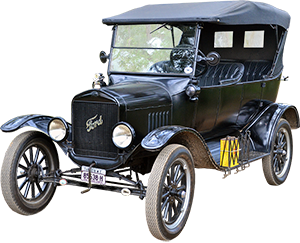
You can also read
about me if you wish - click
here.
My car is a 1925 Ford Model T Open Tourer, built at
Henry Ford's Highland Park Plant, in Detroit,
Michigan, USA. It never strayed far from the
factory, its previous home, Ann Arbor, Michigan,
just 60km away. From new, it's had just three
owners, myself being the third.
I've had a passion for vintage and veteran cars ever
since I was a little tacker, and I always had a
dream that, some day, I might have one of my own.
It all started in 1994, at age 7, while living in
Albany, WA, where the former Extravaganza motor
museum; once home to one of the most famous veteran
cars in history, a 1904 Darracq called ďGenevieveĒ
famous for its appearance in the 1953 movie
Genevieve. From that point, I was hooked on old
cars, and as a boy, built countless models from
Lego.
Later in 2009, I was living in Burnie, Tasmania, and
even though the "Wonders of Wynyard" motor museum
was only a few kilometres away, ironically, I never
went there! The museum is home to the equal oldest
Ford vehicle in the world - a 1903 Ford Model A.
So I wanted to own a vintage car, and I thought what
better car to own than one of the most significant
cars in history; the Ford Model T. It was the
world's first car to be mass produced on an assembly
line. The Model T has the second highest production
number of any car in history, with just over 15
million of them built in its 19 year production run,
between 1908 and 1927. Itís only been surpassed by
the Volkswagen Beetle, with 21 million produced.
My family and I moved to NSW in 2010. In January of
2011, I decided I wanted to buy a Model T. I scoured
the Internet, hoping I might be able to buy one in
Australia, but none were within my budget, the
lowest priced car I found, was $45,000 - that was
never going to happen! So I resorted to looking in
America, and finally found the car, that would
ultimately become my own.
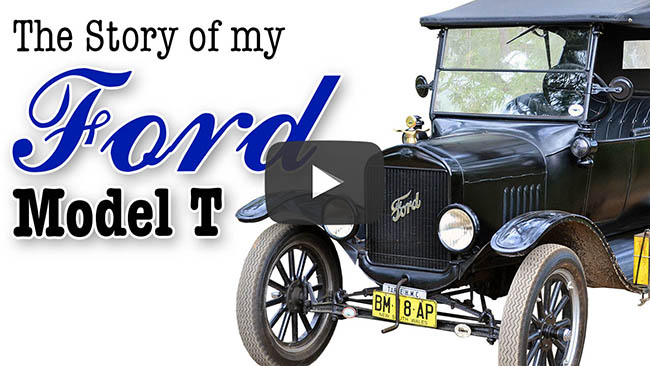
I imported the car, with the help of my father. He
imports all kinds of products from overseas, so I
have to thank him for his assistance in importing my
car. It took 8 months, almost $6,000 in freight
charges and import fees, and much anticipation, from
when I expressed an interest in the car, to when it
actually arrived on Australian soil.
Almost every part on the car is original, with the
exception of the seat upholstery, and of course, the
tyres. Even the 92 year-old, 20 horsepower engine is
original and still running as smoothly as ever.
The car underwent a partial restoration in 1966, and
was garaged ever since. I had the roof restored in
Taree by a very skilled upholsterer, Graham from
Taree Upholsterers. A local tyre fitter, whom to my
surprise had antique equipment in the workshop, was
able to replace the perished inner-tube on the spare
wheel. Iíve replaced the 4 coil boxes, so now the
engine runs as it should.
There's obviously no formal training available these
days to teach anyone how to drive such a historic
museum piece, so I learned via videos on YouTube,
uploaded by fellow Model T enthusiasts.
The controls of the Model T are nothing like a
modern car. There are three pedals on the floor Ė
none of which are the accelerator! Thereís the
clutch, the reverse pedal, and the brake. The
handbrake lever not only operates the parking brake,
it doubles up as the gear lever Ė which is very
amusing to modern mechanics when you try and explain
it to them! The Model T has just 2 forward gears,
plus reverse; and has a top speed of about 70km/h
(45mph). Iíve been clocked at 60km/h, but mostly
only drive around 40-50km/h.
By the time the car arrived, I felt confident I
would be able to drive her, after I got the car
started for the first time, my Tin Lizzie performed
almost perfectly, although the fuel was running
extremely rich at first, which caused her to blow
lots of smoke! With some assistance from a fellow
Model T owner and friend from Sydney, I soon had the
engine running to original spec.
Since the car arrived in August 2011, Iíve had
to do little maintenance. The Model T was heralded
as one of the most reliable cars in history.
However, for safety reasons, Iíve added a set of
auxiliary brakes. The reason for this, the original
brakes are not attached to the wheels, as with a
modern car Ė they are attached to the transmission,
and have cotton linings. While I had every faith in
the Tís ability to stop, it wouldnít hurt to have an
extra insurance policy!
|
Click any of these
images to enlarge.
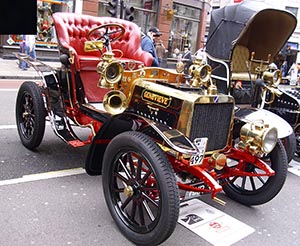
1904
Darracq named "Genevieve" from which my love of old cars
was born.
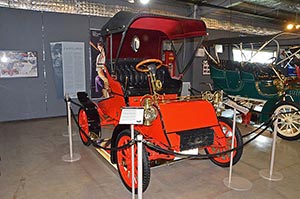
Equal
oldest Ford vehicle in the world - 1903 Ford Model A -
"Wonders of Wynyard" motor museum, Tasmania.
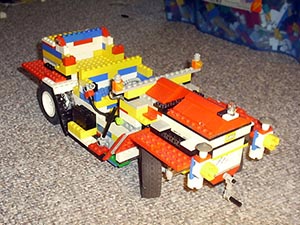
A Lego
vintage car I made in 2003,
I was 16.
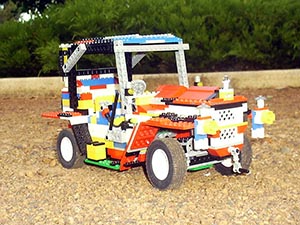
Same car,
with roof attached.
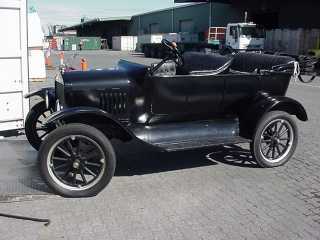
My 1925
Ford Model T, when it arrived in
Australia.
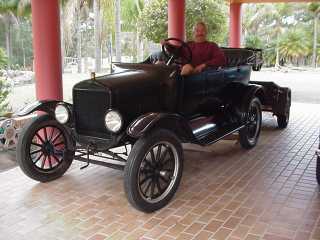
At
Newcastle, Australia
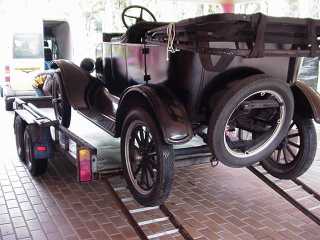
Loading
up Lizzie ready to take her home!
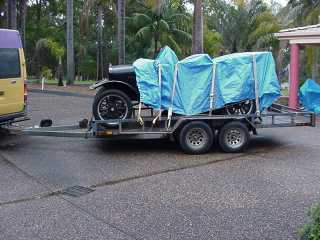
On the
trailer ready for the ride home.
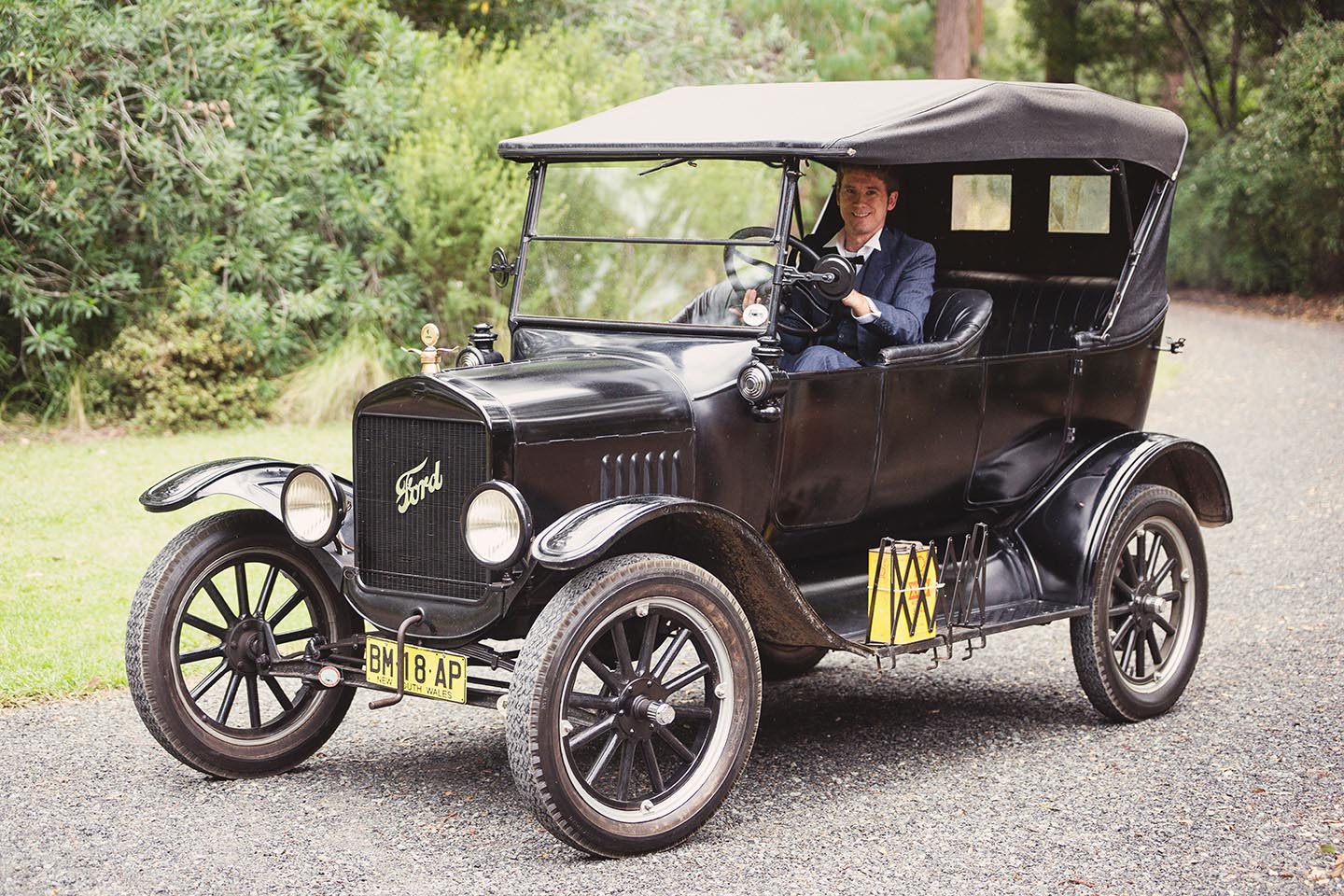
My Model T now :) |

